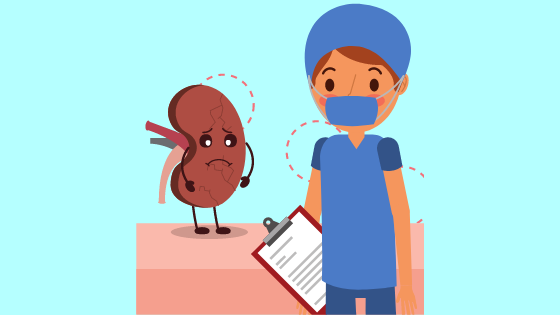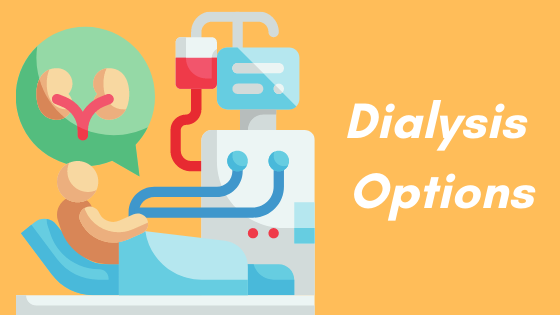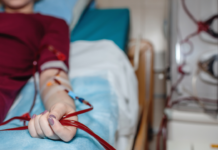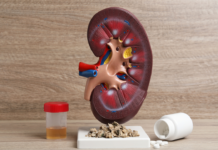*These statements have not been evaluated by the US Food and Drug Administration. This information is not intended to diagnose, treat, cure, or prevent any disease. Always consult with a qualified healthcare professional prior to beginning any diet or exercise program or taking any dietary supplement. The content on our website is for informational and educational purposes only.
Written By: Steve L. Belcher, RN, MSN, MS, DN-CM
There are numerous patients with kidney disease that don’t advance to kidney failure. However, there are patients who do advance to kidney failure and are not aware of the treatment options available to them. If you have kidney disease and need to start kidney dialysis in the future it is important to know your treatment options and have a plan. Below I briefly discuss the current treatment options available for people with kidney failure.
Hemodialysis:
Hemodialysis uses vascular access in your body to connect you to a dialysis machine. Your blood (approximately 2 cups at a time) cycles through the dialysis machine which filters out the waste and extra fluid before returning it to your body. There are two types of vascular accesses for this type of treatment:
- Hemodialysis Catheter
- Arterial/Venous Fistula & Graft
With In-center Hemodialysis, you’ll need to go to a dialysis center 3 times a week, during the day or night, to get treatments.
With Home Hemodialysis, you’ll need a trained care partner to help you with your treatments. You’ll have the comfort and flexibility of starting treatments around your schedule at home.
Peritoneal Dialysis (PD):
Instead of using a dialysis machine, peritoneal dialysis uses the lining of your abdomen (called the peritoneum) as a natural filter to remove toxins and extra fluids from your blood. It uses a special fluid called dialysate. Peritoneal dialysis can be completed by yourself without any needles.
PD is a great choice for people who:
- Are working
- Live an active or social lifestyle
- Or want more flexibility with their treatments.

Kidney Transplant:
Many people decide to pursue a kidney transplant as a treatment option. A transplant is where a healthy kidney is placed inside your body to help you regain some of your normal kidney function. Kidney transplants take time. Normally, dialysis is needed while you wait for a kidney to become available.
Conservative Therapy:
One treatment option that patients with kidney disease often hear about is conservative therapy. This option can be very difficult for some families having to make this decision. There are people that decide with their doctor’s help dialysis isn’t the right choice. Certain activities can comfortably extend life. If you need dialysis and choose not to receive treatment, survival is not likely. Remember, your choice doesn’t have to be permanent. If your lifestyle or health changes in the future, you always have the option to change the way you receive treatments. Talk with your kidney doctor to figure out what treatment is best for you.
About the author
Steven Belcher, RN, MSN, MS, is a dedicated kidney advocate who began his journey 20 years ago as a dialysis nurse. This job inspired him to help as many people with kidney disease as he could. Not only did he spent two decades caring for a patient’s physical and emotional needs in a clinical setting, but he also educated the public on the risk factors of kidney disease. Some of his many philanthropic successes include being a keynote speaker at the National Association of Nephrology Technicians/ Technologists (NANT), presenting at community spaces, and launching radio shows.
He now focuses his time entirely on his organization Urban Kidney Alliance, which educates the public about kidney disease. His goal? To lower rates of Chronic Kidney Disease in urban communities in Baltimore, Maryland, across the country, and globally through education and collaboration.
Steve has also written the book “HOW TO SURVIVE OUTPATIENT HEMODIALYSIS: A GUIDE FOR PATIENTS WITH KIDNEY FAILURE.” You can read the book review here.





